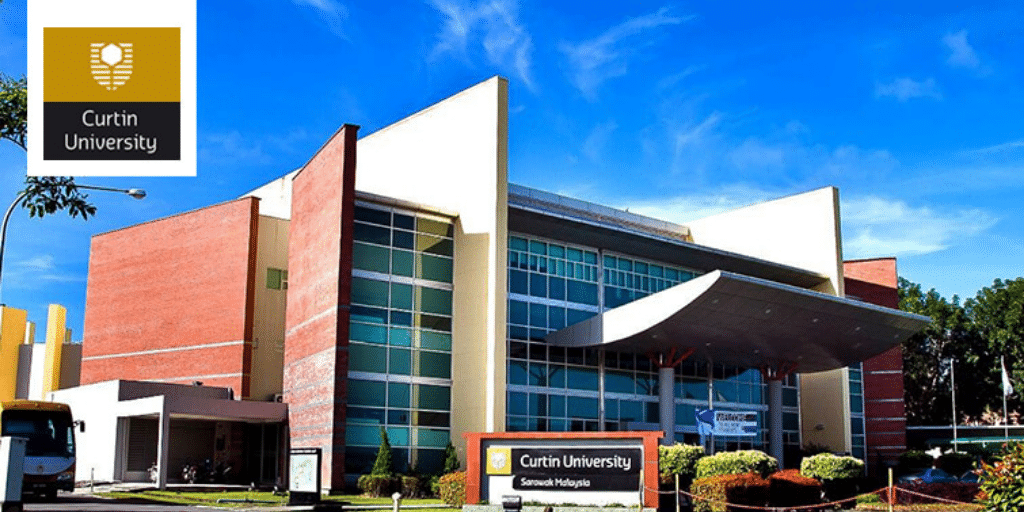Hey, suppose you are looking for an Australian visa lottery to enable you to relocate to Australia. In that case, This article is packaged to help guide you and help you stay away from the plenty of scammers who might be after your money.
Sadly, Australia does not have any visa lottery program in 2023. This information is trusted as it comes from the Australian immigration agency Australianvisa.com. The Information says Australia only has immigration programs for the year 2023.
Do not feel sad. I assure you, you will be happy to see some alternatives to the Australian visa lottery program at the end of this content. I promise to guide you through the processes required for easy migration to Australia.
The Australian visa states that the Australian government does not issue visas through a lottery. Be careful not to lose your money with any vendor or agency that prepares you with an Australian visa.
We have researched that the Australian VISA Lottery has existed over the years, but due to the constant Amendment of the Australian Immigration Laws by the Australian Immigration Commission, anybody coming into Australia must have passed the test.
Which Australian Immigration Program Is Best For Me?
Due to how unique an Immigration Process can be, one will be left with the question of “Which Immigration Program suits his/her Status? ”
I have a post-secondary education.
Australia is interested in your academic studies because it will help you ensure the solidity of your career. Migration programs, such as the candidate for the Province and skilled workers, will help add points to their migration points.
I have at least one year of skilled work experience
This means that you are eligible to join the Australian job market and be a member of the community you find in Australia. Immigration programs for skilled and county workers will increase their points of becoming responsible citizens in Australia.
I have an Australian job offer.
Getting a job means having a certain level of requirements that will qualify you for an Australian visa easily. Having a job offer in Australia means that you have found that your competition contributes to the progress of Australia as a country. The program will directly involve qualified workers, and you are ready to obtain a permanent residence visa.
I have friends and relatives in Australia.
If you have a close relative in Australia who insists that you come over to Australia, you place in a Family Class program. On the other hand, if a friend invites you, you can join the Nominated program. Your stay will bring growth to your friend’s community.
I have already worked or studied in Australia.
Here there is a special offer for those who have put in the effort or are chasing a Degree of any type in Australia. The Offer allows you to share your experience in Australia as a tool to join in the Future that Australia is Buiding.
I have a high net worth or significant financial resources
Having a High Networth or running a Business qualifies you for many Immigration Programmes in Australia. The idea is that your Wealth will also help Australia Grow in diverse ways. And also, your wealth of Business Knowledge will have a significant impact on well-meaning Australians.
I have a business that I own or manage.
Your Ownership of a brand and the wealth of Resources Qualifies you for a certain number of Visa and Immigration Programmes. They Include Provincial Nominee Program Business Immigration streams or for the Business Investor and Entrepreneur programs offered by Australian governments.
The Ball is now in your court. Make your Choice as I take you into the Journey of the various Immigration Programmes I mentioned in the section above.
Australian Visa Lottery: How To Migrate to Australia
As part of its planned Migration Program, the federal government allocates places yearly for people wanting to migrate permanently to Australia. The 2010–11 Migration Program, announced on 11 May 2010, allocates 168,700 places. This comprises 113,850 places in the skill stream, 54,550 in the family stream, and 300 unique eligibility places.
The focus of the Migration Program had changed since 1945 when the first federal immigration portfolio was created. Australia’s immigration policies have evolved over those 65 years from focussing on attracting migrants, primarily from the United Kingdom.
However, this is to increase Australia’s population to focus on attracting workers and temporary (skilled) migrants. This is in the case of meeting the skilled labor needs of the economy.
This Background Note will look at Australia’s Migration Program patterns since 1945, including shifts in numbers and focus. This will also outline some recent changes that have been made to address labor market concerns.
See Australia Student Visa: Step-by-Step Procedures
Australia’s Migration Program
The first federal immigration portfolio was created in Australia in 1945. The main objective of the new portfolio and the implementation of a large-scale immigration program was World War II and beyond. Since then, almost seven million people have settled in Australia.
By 1945, the government was willing to strengthen the Australian population to stimulate economic development after the war and increase the number of people able to defend the country in another war.
The Government intends to increase the population by 1 percent per year. This is through migration to achieve an annual growth rate of 2 percent, including the natural increase.
As a result of the post-war government’s new approach, the proportion of Australians born abroad rose rapidly from 9.8 percent in 1947 to 20 percent in 1971.
This number continued to grow. According to the latest available statistics, just over a quarter of Australia’s resident population (26%) was born abroad.
After the Howard government came to power in 1996, following the initial decline, there was a gradual increase in planned consumption of migration, with migration closely linked to economic growth.
This upward trend continued initially under the Rhode government, with figures reaching a record high of 190-300 in 2008-2009. However, in 2009-2010, planned revenues were reduced to 168,700 and remained at this level for 2010-2011.
The recent cuts in the migration program are due to the impact of the global financial crisis (GFC) on the Australian economy, resulting in a reduced need for additional skilled labor.
Skilled Migration
While the numbers of migration programs are at levels similar to those of twenty or thirty years ago, the focus is now quite different.
There has been much argument that the primary determinant of migration policy since the 1980s has been to focus on labor market outcomes for migrants.
Various policy measures have been implemented to increase the likelihood that new migrants can obtain employment.
This is to help achieve economic independence, thus reducing the risk of migration of immigrants to public funds.
For example, the introduction of the list of candidate skills and the tightening of English requirements. Also, add with the stricter rules regarding the recognition of external qualifications to meet eligibility requirements for the qualification of a public migration were some of the policy measures introduced in the nineties.
This followed concerns about the employment of new immigrants after the recession in the early 1990s. In addition, the last decade has witnessed a change in the balance of the migration program that moves away from the family path in favor of the trained group.
In 1996-1997, skilled migration accounted for 47 percent of the migration program; for 2008-2009, this figure increased to 67 percent.
Four main categories exist under the skilled component of the Migration Program:
- General skilled migration for skilled workers who do not have an employer sponsoring them. Migrants are selected based on their nominated occupation, age, skills, qualifications, English language ability, and employability.
- Employer nomination, for those who have an employer willing to sponsor them
- Business skills migration, which encourages successful business people to settle in Australia and develop new business opportunities, and
- Outstanding talent is a small category for ‘distinguished individuals with special or unique skills of benefit to Australia’, such as sportspeople, musicians, artists, and designers, who are internationally recognized as outstanding in their field.
Check these 100+OPPORTUNITIES TO STUDY ABROAD IN 2023
Family Stream
The family flow in the immigration program allows immediate family members to emigrate to Australian citizens, permanent residents, or qualified New Zealand citizens.
Family members admitted under this stream include couples, girlfriends, dependent children, parents and relatives of orphans, dependents, and caregivers.
Immigrants of the family stream must have a sponsor by an Australian citizen, permanent resident, or eligible citizen of New Zealand.
There is no language skills test or requirement for family migration, as is the case for qualified migrants, but applicants must meet the necessary health and personal requirements.
The family stream comprises four main categories:
- Partner, which includes spouses, de facto partners (including same-sex partners), and fiancés
- Child, including the dependent child or step-child of the sponsor. Also, a child adopted from overseas, and orphan relatives (a child under the age of 18, not married or in a de facto relationship, who cannot be cared for by his or her parents)
- Parent, and
- Other Family, including an aged dependent relative, remaining relative, and carer categories.
The largest category under the family stream of the Migration Program is the Partner category, with around 42,000 visa grants in 2008–09, 8,500 Parent visas, 3,200 Child visas, and 2,500 in the Other Family category.
Source Countries
The significant change in the number of immigrants to Australia since 1945 is the change in the countries of origin. Also, With the gradual disintegration of white politics in Australia and the need to absorb many of the displaced.
This is after the war in Europe, Australia’s policy of accepting British immigrants often relaxed. However, In 1901, people born in the United Kingdom accounted for 58 percent of the total born abroad in Australia.
According to the 2006 census, this figure was brought down to 23.5 percent of those born abroad.
In 2008–09 the UK continued to provide the most significant number of migrants to Australia (excluding New Zealand citizens, who don’t count in Migration Program figures. Also, it is now closely followed by India and China as the second and third largest source countries.
Regional Initiatives
The past two decades have seen a variety of measures designed to attract qualified migrants to regional and rural areas. Employers cannot fill vacancies through the local labor market in these areas.
These initiatives are consistent with the focus of the migration program to fill gaps in the Australian labor market. Also, with the help of meeting the economy’s needs, in this case, labor markets and regional economies.
These initiatives also seem to have played a role in the recent debate on sustainable population growth. This brought about the idea of encouraging growth in regions far away from large cities.
Notwithstanding, recent figures indicate that regional migration initiatives are becoming more successful. For 2008–09, the total number of visas they gave out under all the State-Specific and Regional Migration initiatives was 33,474.
This represented an increase of 28 percent from 2007–08 and 29 percent of the total skill stream for 2008–09.
Temporary Migration
While fluctuations in permanent migration are significant, the enormous change in migration patterns to Australia is in the last decade. This has been the growth of long-term temporary migration.
Temporary migrants are not part of the immigration program. However, many people increasingly consider temporary migration the first step towards permanent settlement in Australia.
Also, in 2008-2009, more than a third of the immigration program consisted of persons who were opportune to have permanent residence after their initial entry into Australia temporarily.
While not all temporary migrants seek permanent residency in Australia, many do. Temporary migration is, therefore, highly susceptible to policy changes affecting the permanent Migration Program. Also, to those concerning skilled migration.
For example, changes to the SOL directly impact the migration outcomes of overseas students. This is students hoping their Australian qualification will assist them on their path to permanent residency.
This, in turn, impacts the number of overseas students electing to undertake specific courses in Australia. Student visa numbers are currently in decline, from 320 000 in 2008–09 to around 270 000 in 2009–10.
There is a strong possibility that the skilled migration policy changes outlined above will play a role. This is to decrease further the number of long-term temporary migrants in the student category.
Frequently Asked Questions
Anyone interested in applying under the Skilled Migration Program should complete the Online Assessment to determine their eligibility under the skilled visa classes. You will be advised on the appropriate route and provided with information regarding the appropriate Australian visa application form after being assessed.
The Skilled Migration Program facilitates emigration based on an applicant’s qualifications and suitability to help ease labor shortages in Australia.
The Migration Occupations in Demand List (MODL) identifies those professions where shortages of workers are most severe, and professionals on the MODL may have their applications fast-tracked.
The Skilled Migration Program is points tested, and points are awarded for age (applicants must be under 45), occupation, skills, language ability, and other criteria.
ETA visas can be applied for online and are usually granted within minutes.
An ETA visa is a multiple-entry visa that allows the holder to stay up to three months. An ETA visa is valid for one year. Working in Australia is not permitted on an ETA visa.
Find more information about the ETA Tourist Visa.
Young people aged between 18-30 and citizens of countries with a working holiday maker agreement with Australia may be eligible for an Australian Working Holiday Visa, which can be applied for online.
A working holiday visa permits the holder to travel and work in Australia for up to one year. However, a second working holiday visa extending the stay in Australia to two years is now possible. Find More information about the Working Holiday Visa.
Family visas are used to reunite Australian citizens or permanent residents with partners or dependent family members in Australia. You can be advised on how to apply for one by completing the Australian skilled visa assessment.
The family visa classes are not points tested but require the sponsorship of an Australian citizen or permanent resident.
Australian Partner Visas enable the married spouses, common-law spouses, de facto partners, and fiances of Australian citizens, permanent residents, or eligible New Zealand citizens to live and work in Australia. Same-sex partners can apply for an Interdependency Visa.
Family visas are also available for dependent children, orphaned relatives or adopted children, dependent relatives, remaining relatives, and carers of Australian citizens.
Find more information about Family Migration to Australia.
EDITORS RECOMMENDATION:
- Diversity Visa Lottery to live – Official USA Visa Lottery
- United States of America State Department Electronic Diversity Visa Lottery
- Fully Funded Undergraduate Studies in Canada
- TechWomen STEM Emerging Leaders Program
- Obama Foundation Scholars Program at the University of Chicago in the USA
- Savannah State University: Courses, Ranking, Admission, Scholarships & Tuition
Does this article meet your immediate needs? If yes, leave us a 5-star rating in the Review Box below. If not, leave a comment in the comment box to express your concern or ask a question, and we will get back to you as soon as possible.
DISCLOSURE: This post may contain affiliate links, meaning when you click the links and make a purchase, we receive a commission.






Comments are closed.